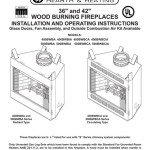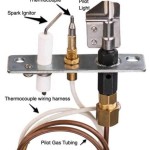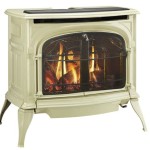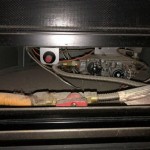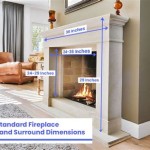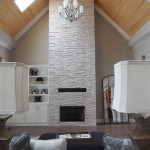Propane Outdoor Fireplaces: A Comprehensive Guide
Outdoor fireplaces have evolved from simple backyard fire pits to sophisticated design elements that enhance the aesthetic and functionality of outdoor living spaces. Propane-fueled outdoor fireplaces offer a convenient and clean-burning alternative to traditional wood-burning options, providing warmth and ambiance without the hassle of gathering, storing, and burning wood. This document provides a comprehensive overview of propane outdoor fireplaces, covering their benefits, types, installation considerations, safety precautions, and maintenance requirements.
Benefits of Propane Outdoor Fireplaces
Propane fireplaces present several advantages over wood-burning and natural gas alternatives, making them an increasingly popular choice for homeowners seeking to enhance their outdoor spaces. These benefits contribute to both the user experience and the environmental impact of outdoor heating. One of the primary advantages is convenience. Unlike wood-burning fireplaces, propane models eliminate the need to source, stack, and dry firewood. This reduces the manual labor and storage space required for maintaining an outdoor fire. A propane fireplace ignites quickly with the turn of a knob or the push of a button, providing instant heat and ambiance. Moreover, propane fireplaces offer greater control over the flame height and heat output, allowing users to adjust the intensity to their preference. This level of control is not easily achievable with wood-burning fires, which can be unpredictable and difficult to manage. The predictable nature of propane also contributes to a consistent and enjoyable experience.
Cleanliness is another significant benefit. Burning wood produces smoke, ash, and particulate matter, which can be detrimental to air quality and pose health risks, especially for individuals with respiratory conditions. Propane combustion, on the other hand, is much cleaner, producing significantly less smoke and particulate matter. This makes propane fireplaces a more environmentally friendly option and reduces the impact on surrounding neighbors. The absence of ash also simplifies cleanup, eliminating the need to regularly remove and dispose of ashes. This contributes to a cleaner and more enjoyable outdoor environment. Additionally, propane fireplaces often feature enclosed designs, minimizing the risk of sparks and embers escaping, thereby enhancing safety.
Fuel efficiency is also a factor to consider. Propane burns efficiently, converting a high percentage of its energy into heat. This means that less fuel is required to produce the same amount of heat compared to wood. While the cost of propane may vary depending on location and market conditions, the overall efficiency can make it a cost-effective option over time. The ability to control the flame height and heat output further enhances fuel efficiency, allowing users to tailor the consumption to their specific needs. Many propane fireplaces are designed with features such as electronic ignition and adjustable burners, optimizing fuel usage and minimizing waste. This ensures that propane is used effectively and economically.
Types of Propane Outdoor Fireplaces
Propane outdoor fireplaces are available in a variety of styles and designs to suit different aesthetic preferences and spatial requirements. These can generally be categorized into pre-built units, custom-built structures, and portable options. Pre-built units offer convenience and ease of installation, while custom-built fireplaces provide greater design flexibility. Portable options are ideal for those who want to move their fireplace around their property or take it with them on camping trips. Each type has its own set of advantages and disadvantages, making it important to carefully consider individual needs and preferences when selecting a propane outdoor fireplace.
Pre-built propane fireplaces are self-contained units that are typically constructed from materials such as stone, brick, stucco, or metal. These units are available in a wide range of styles, from traditional to contemporary, and can be easily integrated into existing outdoor spaces. Pre-built fireplaces often feature decorative elements such as mantels, hearths, and fire glass, adding visual appeal. Installation is relatively simple, usually involving connecting the unit to a propane tank or a natural gas line (with a conversion kit). These units are readily available at home improvement stores, outdoor living retailers, and online marketplaces. They provide a cost-effective and time-saving solution for those seeking a quick and easy way to add a fireplace to their outdoor space.
Custom-built propane fireplaces offer the ultimate in design flexibility. These fireplaces are constructed on-site, allowing homeowners to create a unique focal point that perfectly complements their outdoor landscape. Custom-built fireplaces can be tailored to any size, shape, or style, and can incorporate a variety of materials, such as natural stone, brick, concrete, and tile. This option typically requires the expertise of a qualified contractor or mason, who can design and build the fireplace according to the homeowner's specifications. While custom-built fireplaces are more expensive and time-consuming than pre-built units, they provide the opportunity to create a truly one-of-a-kind outdoor feature. The integration of customized elements such as seating areas, storage compartments, and outdoor kitchens can elevate the entire outdoor living experience.
Portable propane fireplaces are lightweight and easy to move, making them ideal for those who want to enjoy the warmth and ambiance of a fireplace in different locations. These fireplaces typically feature a compact design and are fueled by small propane tanks. Portable options range from tabletop models to larger, freestanding units. They are perfect for patios, decks, balconies, and camping trips. Some portable propane fireplaces also double as cooking grills, providing added functionality. These units are quick to set up and operate, offering a convenient and versatile heating solution for outdoor enthusiasts. While they may not provide the same level of heat as larger, permanent fireplaces, portable propane fireplaces are a practical option for those seeking mobility and convenience.
Installation Considerations and Safety Precautions
The installation of a propane outdoor fireplace requires careful planning and adherence to safety guidelines. Proper installation ensures the safe and efficient operation of the fireplace and prevents potential hazards. It is essential to consider factors such as location, ventilation, gas line connections, and local building codes before beginning the installation process. Failure to follow these guidelines can result in dangerous situations, including gas leaks, fires, and explosions. Consulting with a qualified professional is highly recommended to ensure that the installation is performed correctly and meets all applicable safety standards.
Location is a critical factor to consider. The fireplace should be placed in a well-ventilated area away from flammable materials such as trees, shrubs, and dry vegetation. It should also be positioned away from structures such as fences, sheds, and overhangs to prevent the risk of fire. A minimum clearance of several feet should be maintained between the fireplace and any combustible surfaces. The location should also be chosen to minimize the impact of wind, which can affect the flame and potentially spread embers. It is important to ensure that the fireplace is placed on a level and stable surface to prevent it from tipping over. The surrounding area should be clear of any obstructions that could impede access or ventilation.
Proper ventilation is essential for propane fireplaces. The combustion of propane produces carbon monoxide, a colorless and odorless gas that can be deadly. Adequate ventilation allows carbon monoxide to dissipate, preventing it from building up to dangerous levels. Outdoor fireplaces should be installed in open areas with sufficient airflow. Enclosed or partially enclosed spaces should be avoided, as they can trap carbon monoxide. It is important to ensure that there are no obstructions that could block the flow of air around the fireplace. Regular inspection of the ventilation system is recommended to ensure that it is functioning properly. Carbon monoxide detectors should be installed in nearby structures to provide an early warning of any potential hazards. These detectors should be tested regularly to ensure that they are working correctly.
Gas line connections must be performed by a qualified professional. Incorrectly installed gas lines can leak, creating a significant fire hazard. All gas lines must be properly sealed and tested for leaks before the fireplace is put into operation. The gas line should be sized appropriately for the fireplace's BTU rating to ensure adequate gas flow. Flexible gas lines should be used to allow for movement and prevent damage. The gas line should be protected from physical damage and exposure to extreme temperatures. It is important to follow all applicable codes and regulations when installing gas lines. Regular inspection of the gas lines and connections is recommended to detect any signs of wear or damage. If any leaks are detected, the gas supply should be shut off immediately, and a qualified professional should be contacted for repairs.
When using a propane outdoor fireplace, several safety precautions should be observed. Never leave the fireplace unattended while it is burning. Keep children and pets away from the fire to prevent burns. Use a fire extinguisher that is rated for Class B fires in case of an emergency. Do not use flammable liquids to ignite the fire. Regularly inspect the fireplace for any signs of damage or wear. Clean the fireplace regularly to remove any debris or obstructions. Ensure that the propane tank is properly stored and secured. Follow all manufacturer's instructions for operation and maintenance. By following these safety precautions, users can enjoy the warmth and ambiance of a propane outdoor fireplace without putting themselves or others at risk. It is always better to err on the side of caution when dealing with fire and gas.

Choosing The Right Outdoor Fireplace Ethanol Wood Propane Fireplaces

Cal Flame 78 In Tile And Stucco Propane Gas Outdoor Fireplace 22 Frp909 St The Home Depot

12 Best Propane Fire Pits Of 2024 Top Picks

Cal Flame 78 In Tile And Stucco Propane Gas Outdoor Fireplace 22 Frp908 2 St The Home Depot

Cal Flame 78 In Stone Veneer And Tile Propane Gas Outdoor Fireplace 22 Frp908 3 Rk The Home Depot

Fire Pits Outdoor For Patio Backyard Pit Outfitter

Stone Veneer Outdoor Fireplace Rustic Fireplaces

Outdoor Propane Wood Burning Fireplaces Real Flame

Allen Roth 40000 Btu Wood Look Steel Liquid Propane Outdoor Fireplace In The Gas Fireplaces Department At Com

Patio Heating Options Cost Comparison Ultimate Home Comfort
Related Posts

